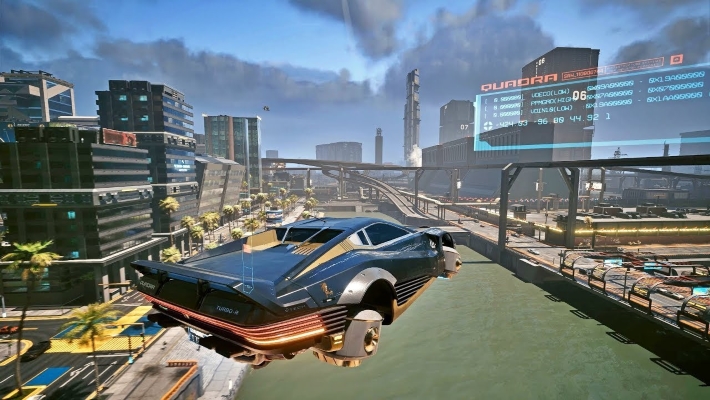
“We already have flying cars, they are called helicopters”
-Neil De Grasse Tyson, on Joe Rogan Podcast
Since time immemorial, when anyone was asked about future tech, they would say “we will have flying cars in the future”, it still holds true even today, so true that it became a popular meme on the internet. Flying cars are seen as the harbinger of the future technology, the pinnacle of transportation technology, it is a beautiful scenario, and airspace in cities filled with flying cars of aerodynamic designs is a picture-perfect visual. It is a staple of any sci-fi movie or video game. In an ideal world, a flying car is a good transportation vehicle; unfortunately, we do not live in an ideal world. We need to tackle certain problems before we integrate it into our system.
The Future of Domestic Transport
Cars of the future in pop culture are designed as a typical car with angled wings and thrusters in the place of wheels, it is a watered-down version of a spacecraft but a family edition. If the idea of a flying car ever manifests, it’ll be a revolution, it’ll bring about a change in innovation and history and the concept of self-driving flying cars will soon follow. The days of bad roads will soon be behind us, and road costs will gradually drop as flying cars can fly theoretically in unlimited airspace. Emissions can be reduced to a sizable degree; it’ll be one small stride for the car, but one large step for mankind.
The Road Blocks Faced By The Car
The difficulties that a flying car will pose on the modern urban landscape are so much that even if I had a week it wouldn’t be enough to present them all. What is the maximum altitude it can be restricted on? How should buildings be designed? How much space does it require to take off and land? Does it require a runway? If so how much space should a house need? What would happen to already existing large buildings which cannot support such vehicles, should they be remodeled? What are the road-like rules that must be followed? In short flying cars is a horror in the urban environment, cables and electricity lines have to be readjusted such that the cars would have free access to movement. This spurs the need for sky dividers to form zones in the sky to ensure lane discipline, and their cooperation with pre-existing automobiles is a whole other debate.
The Stop Signs
This is the biggest crisis in my opinion; you need to lay down a new set of rules, and regulations for this completely new mode of transportation, on what basis should the driver be given a license? Should all those who desire to own a flying car be trained like commercial pilots? How will it fare on the user’s expenses? Or will it be a luxury like century-old aged wine? Where only a select few can afford it? Should children be taught new things like how they learn “Red means stop, Green means go”, but the equivalent for the sky? What are the possible misdemeanors a driver can commit? How should cops be trained to tackle such sky-related felonies and crimes? Most important of all, what are the safety standards that should be set as a benchmark for the car?
The bureaucracy is going to have their hands full from coming up with effective countermeasures for the above problems and many more which aren’t mentioned above, and it has to be done quickly, the more they delay the more the problems are going to pile up. In economics, it is often joked that “if you change one thing you inadvertently change two more things”, flying cars might be the pinnacle of transportation technology. Still, it brings so many problems a layman never fathomed.
The Driver’s Seat
Let us assume a hypothetical situation, let us imagine an alcoholic driver getting into an accident, what are the impacted parties, the first answer will be the rash driver and the unsuspecting victim or a tree, depending on the scale, there can be two to five victims. Now let us apply the same scenario to a flying car, when a flying car gets into an accident, the rash driver and the victim both fall out of the sky potentially 80 feet off the air in a metal box, and these two vehicles will crash into either a building floor full of people and damage the building compromising the safety of everyone in it, or it will crash into the ground possibly forming a fatal impact on the road and potentially the people. An incident with a flying car will cause more damage to infrastructure and lives than a traditional automobile would. That’s not the end of it, this is the part that all the adults dread, Insurance, with such a potential for damage, how will you pay for the damages? Will you have insurance coverage? If so what is the premium? Will insurance providers even come forward to insure knowing the magnitude of damage they have to pay for? Should the equivalent of guard rails be installed potentially to a towering height so a large number of people don’t have to get hurt due to the actions of one stupid driver? Will taxpayer money foot the cost for that project?
This is the part where I tell we are potentially biting off more than we can chew, the price of advancement is not worth the destruction it will bring, and it might not be an exaggeration to say we are potentially letting the devil inside our house. This transportation revolution can dramatically increase the fatalities of vehicle-related accidents and no matter how good the technology is the human driver is an unpredictable variable.
The Future Can Wait
All that glitters is not gold, the concept of flying cars is tempting, but it is full of problems with our current framework, which is next to impossible to integrate. The amount of capital, Urban redevelopment and safety implementations required is off the charts, but we humans as a species have adapted and grown, we have welcomed countless new inventions when it was approached with skepticism from the telephone to the aeroplane, all major inventions have seamlessly integrated into our society, it can be said that skepticism is what drives growth, the desire to prove naysayers is strong with humans.







